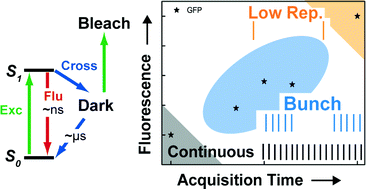Triplet-relaxation microscopy with bunched pulsed excitation
Abstract
Obtaining high signal levels in

- This article is part of the themed collection: Microscopy beyond imaging: space-resolved photochemistry and photobiology
* Corresponding authors
a
Max Planck Institute for Biophysical Chemistry, Department of NanoBiophotonics, Am Fassberg 11, 37077 Göttingen, Germany
E-mail:
ceggeli@gwdg.de, shell@gwdg.de
Obtaining high signal levels in

 Please wait while we load your content...
Something went wrong. Try again?
Please wait while we load your content...
Something went wrong. Try again?
G. Donnert, C. Eggeling and S. W. Hell, Photochem. Photobiol. Sci., 2009, 8, 481 DOI: 10.1039/B903357M
To request permission to reproduce material from this article, please go to the Copyright Clearance Center request page.
If you are an author contributing to an RSC publication, you do not need to request permission provided correct acknowledgement is given.
If you are the author of this article, you do not need to request permission to reproduce figures and diagrams provided correct acknowledgement is given. If you want to reproduce the whole article in a third-party publication (excluding your thesis/dissertation for which permission is not required) please go to the Copyright Clearance Center request page.
Read more about how to correctly acknowledge RSC content.
 Fetching data from CrossRef.
Fetching data from CrossRef.
This may take some time to load.
Loading related content
